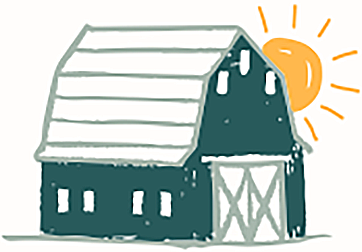DORKING CHICKENS
The ultimate homestead chicken.
The oldest recorded chicken breed is also a rare and endangered breed. Dating back to the Roman era, these chickens lay eggs through winter, are strong foragers, and an exemplary table bird. Whether for eggs or meat, the Dorking reigns supreme!
Our birds free range on grassy acreage during the day, foraging like chickens were meant to. Our goal is to introduce this endangered, ancient breed to more backyard flocks in the hopes that it will make a full comeback. With less than 1000 breeding Dorkings in the US, consider adding the Dorking to your flock!
We are NPIP and AI clean, tested through the state of Oregon. That means our birds are healthy and we can legally ship eggs and chicks. Contact us about adding Dorkings to your flock, or visit our SHOP.
ANCIENT & RARE
The earliest record of Dorking chickens can be found in the writings of Columella, a roman agricultural historian during the 1st Century AD. He reports that Julius Ceasar encountered the Dorking during Roman conquest of Italy in 54 BC when he brought them to England. Named after the town of Dorking in England, it is a pure breed that represents a unique genetic resource.
The Dorking breed entered the official poultry world in 1874 with its inclusion into the Standards of Perfection book. This rare bird is included in the RBST Poultry Conservation Trust, and The American Livestock Breeds Conservancy categorizes the Dorking as “threatened.”
In this country 3 varieties of Dorking chickens are recognized by the standard: the White, the Silver-Grey, and the Colored. The White Dorking is bred with a rose comb, the other two varieties have either rose or single combs, although most have single combs. All Dorkings have white legs, white skin, long bodies, short legs, full breasts, and 5 toes. It is one of only five chicken breeds in the world that have 5 toes. Most only have 4. The fifth toe grows on the back of the foot and slopes upward
The silver-Grey Dorking chicken descended from the Colored Dorking variety. The hens have a silvery white neck, slate-grey back, and salmon-red breast shading. Dorking roosters have striking eyes, a large upright 6 point comb, and medium red earlobes.
BACKYARD LAYER
Dorking chickens are respectable layers of large, blush tinted white eggs. Essentially a white egg with a pink bloom that appears to glow when first laid! The hens are known to lay consistently through the winter and can average 249 eggs per year. Although hardly as prolific as a leghorn, there is a record of a Dorking hen which laid 118 eggs in 121 days!
These birds are calm, quiet, and docile. They are playful and easily handled. Dorking hens can be broody and make excellent mothers. Even caring for chicks of another species such as turkeys and ducks.
Dorkings are also the only chicken with red earlobes to lay a white egg. All other chickens with red lobes lay brown eggs.
TASTERS CHOICE
The Dorking chicken excels as a quality meat producer. They have a tender, fine-textured, flavorful meat with ample portions in the breast, wing and wishbone area. Queen Victoria preferred the Dorking over any other breed of table fowl. In fact, when it comes to quality and flavor of meat, the Dorking chicken has few rivals.
In 2009 The Livestock Conservancy Chefs Collaborative held a chicken tasting event- a blind taste test of the top chicken breeds. Tasters judged each samples’s flavor, texture and appearance. Of course, Dorking chicken was the overall favorite!
These chickens are short but heavy. Cocks average 10lbs, and hens 8lbs when fully mature. Although cocks have been known to reach 12lbs in weight, but such instances are not common. Suggested butcher at 12-22 weeks. At 12 weeks they are the size of a rotisserie chicken 2.5lbs dressed out. By 18-22 weeks you have a very large but tender chicken to quarter or breast out.
In my personal experience you cannot compare the Dorking meat to any other heritage breed. It may rival the CornishX in tenderness and the skin is not thick but thin and crispy when cooked. However unlike the CornishX these chickens are self-sustainable when kept in a flock. They forage and behave like chickens should. They also eat less processed feed than commercial layers when allowed to forage. Quite possibly the perfect homestead chicken!

